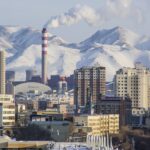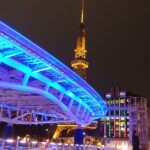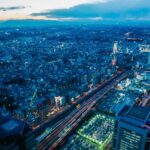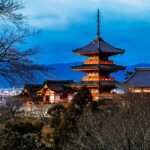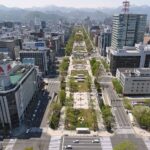The public transportation network of Harbin, which consists of buses, taxis, and the Harbin Metro, is quite well developed. With more than 350 routes that almost cover the entire city, buses are the most popular mode of public transportation in Harbin. Three lines currently traverse the city as part of the three-line Harbin Metro, which opened for service in 2013. Taxis are also commonly accessible and can be called or flagged down on the street. In Harbin, all cabs have meters, and fares are calculated based on the distance driven. Cash or the Harbin Transportation Card may be used to pay for all modes of public transportation in Harbin.
Metro system in Harbin – Basic information
One of the city’s main public transportation networks is the metro system in Harbin. There are three lines in total: Line 1, Line 2, and Line 3. Due to the seamless integration of all lines and buses, getting around the city is simple.
The lines of the Harbin subway system
Line 1 (Harbin East Railway Station – Xinjiang Street)
The Harbin Metro’s Line 1 is a rapid transit line that connects the city’s west and east. There are 23 stops along this 26.05 km-long railway.
Line 2 – Jiangbei University Town – Meteorological Observatory
A rapid transit line in Harbin, Line 2 of the Harbin Metro runs from Jiangbei University Town to the Meteorological Observatory. There are 19 underground stations along the 28.7 km-long railway.
Line 3 – Sports Park – Taipingqiao
From Sports Park to Taipingqiao, Line 3 of the Harbin Metro provides rapid transit in Harbin. Its total length is 24.64 and it has 24 stations.
Map of Harbin Metro 2023 – Free Download in PDF
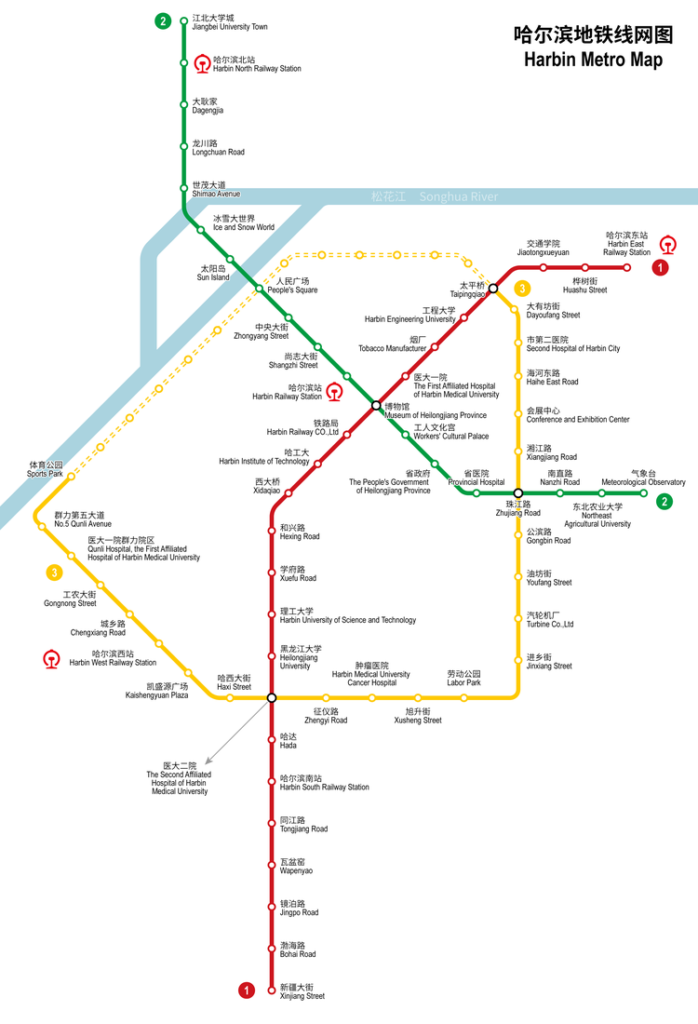
Click and download the map of Harbin’s underground system for 2023
Anyone who lives in or travels to the city must have a copy of the Harbin Metro 2023 map. It offers a thorough overview of the metro system, its routes, and a list of every station. It is simple to access whenever and wherever you want because it is freely downloadable in PDF format. Visitors to the city can simply tour it and get around with the aid of this map. The map also provides details on surrounding landmarks, eateries, and other points of interest. For anybody visiting or residing in the city, the Harbin Metro 2023 map is a need.
Public transport tickets in Harbin – Best types for travelers & actual prices
A stunning city in China known for its culture and winter sports is called Harbin. Public transportation is the ideal option for tourists who want to experience the city.
There are various choices when it comes to tickets. The Harbin Tourist Card is the most popular choice for transient visitors. This three-day card may be purchased at the Harbin Airport and a number of tourist destinations. All modes of public transit, such as the metro, bus, and trolleybus, are accessible. The card, which has discounts at various eateries and tourist destinations, costs 78 RMB.
The Harbin Public Transportation Card is an excellent choice for individuals who intend to remain for a longer period of time. There are three versions available: student, adult, and senior. The card can be used to pay for rides on the trolleybus, bus, and metro. The price of the card varies depending on the version you purchase; the student version costs 25 RMB, while the adult and senior versions cost 40 and 30, respectively.
Finally, single tickets are sold at all metro and bus stations for individuals who wish to pay as they go. A single metro ticket costs 3 RMB, compared to 2 RMB for a single bus ticket.
The Harbin Tourist Card is the best choice for visitors who will be in Harbin for three days. All modes of public transit are accessible, and certain attractions provide discounts. Additionally, it is the most economical choice for transient guests.
Summary of fares for public transport in Harbin
- Harbin Tourist Card: This 3-day card, available at the airport and other tourist locations, costs 78 RMB and provides access to all public transportation options as well as discounts at a number of restaurants and tourist attractions.
- Harbin Public Transportation Card: available in three variants (student, adult, and senior); costs vary (25, 40, and 30 RMB, respectively); used to pay for trolleybus, bus, and metro travel.
- Single Tickets are available at all subway and bus stops; a subway ticket costs RMB 3 and a bus ticket RMB 2.
Timetables & Schedules of the Harbin Metro system
Every day from 6:30 am to 11:30 pm, the Harbin Metro system is in operation, with the first train leaving at 6:30 am and the final train leaving at 11:30 pm. Trains come to each station every five minutes during peak hours, while they do so somewhat less frequently during off-peak hours. Six lines make up the Metro system; Line 1 runs from East to West, while Lines 2 through Line 6 travel from North to South. Riders can more easily recognize their destination because of each line’s distinctive hue. The Harbin Metro system also provides a range of services, such as a mobile app for purchasing tickets, a customer service hotline, and a website with route information.
What Are Other Options For Public Transportation In Harbin?
In addition to the metro, there are other public transit alternatives in Harbin. These include shared bikes, taxis, trolleybuses, and buses. With over 200 bus lines available, buses are the most popular mode of public transit in Harbin. On some routes, trolleybuses are also an option, and IC cards can be used to pay for both buses and trolleybuses. Taxis are also well-liked and provide a practical and comfortable means to get within the city. Shared bikes are an option for people seeking a hipper mode of transportation that let you borrow a bike whenever you want and ride around the city. With all of these alternatives, Harbin has a selection of transportation options.
how does the public bus transportation work in Harbin
Knowing how public bus transportation operates and the bus lines that are used the most is crucial for navigating the city. The Harbin Public Transportation Corporation runs the city’s bus system. The last bus to leave the stations is at 10:30 p.m. The buses run every day from 5:00 a.m. to 11:00 p.m. The fixed fare for all buses is 1 CNY, and they are offered in both normal and air-conditioned forms.
The 3, 5, 8, 11, 17, 18, 43, and 59 bus routes are the busiest ones. While the 5 line travels from the airport to the city center, the 3 line connects Harbin Railway Station to the city center. The 8 line, the 11 line, and the 17 line all connect the city center to the Siberian Tiger Park, the Harbin Ice and Snow World, and the Sun Island Scenic Area, respectively. The 18 line, the 43 line, and the 59 line all travel from the city’s core to Zhaolin Park, the Harbin Exhibition core, and Central Street, respectively.
There are numerous express and night bus routes in addition to the normal bus lines. From 6:00 am to 9:00 pm, express buses leave from the city center for the airport and the train station. From 10:00 p.m. to 3:00 a.m., night buses are provided from the city center to the airport and the railroad station.
How do the public TRAINS work in Harbin?
The major hub for public trains in Harbin is the Harbin Railway Station. From here, passengers can board any of the numerous lines that link the city to various locations in the area. The Harbin-Shenyang Intercity Railway, the Harbin-Dalian Railway, and the Harbin-Beijing Railway are some of the most well-traveled rail routes. The most crucial route for tourists is the Harbin-Shenyang Intercity Railway. This line connects Harbin with Shenyang, the provincial capital of Liaoning. Given that it only takes around two and a half hours to travel between the two cities, this route is the quickest and most practical option. The second-most crucial travel connection is the Harbin-Dalian Railway. From Harbin, a significant port city in Liaoning Province, this route travels to Dalian. This route takes roughly four hours longer than the Harbin-Shenyang Intercity Railway because of its somewhat slower speed.
For anyone looking to go to the Chinese capital, the Harbin-Beijing Railway is the most crucial link. This line travels from Harbin to Beijing, and the trip takes over eight hours. A number of smaller minor lines connect Harbin to other regional cities in addition to these main ones. For instance, the city is connected to Changchun, the provincial capital of Jilin, via the Harbin-Changchun Railway. The travel on this line takes roughly three hours.
How To Get From Harbin Taiping International Airport (HRB) To The City Center With Public Transport?
Are you trying to figure out how to go from Harbin Taiping International Airport to the city center quickly and easily? Then taking public transit is the best option! You’ll find all the information you need in this article to make the trip from the airport to the city center simple.
The distance between the city center and Harbin Taiping International Airport, which lies outside of the city, is around 25 kilometers. Thankfully, there are a number of public transit choices that may easily carry you to your desired location.
The airport shuttle bus is the most well-liked choice. These buses leave from the airport’s arrivals terminal and provide direct service to a number of areas in the city center, such as hotels, retail malls, and popular tourist destinations. The trip takes around 40 minutes and costs 8 RMB each person. The airport fast bus is yet another selection. These buses leave from the airport’s arrivals area and provide a direct route to the Railway Station in the heart of the city. The trip takes around 45 minutes and costs 10 RMB for each person.
There is also the Harbin Metro for individuals who would prefer a more direct route. The airport’s arrivals terminal provides access to the metro line, which connects the airport with the city center. The trip takes around 30 minutes and costs 2 RMB per person.
how do spend 3 days in Harbin?
You’ve come to the right site if you’re seeking a special and thrilling trip to Harbin in China. This three-day tour will give you a fantastic overview of all this dynamic city has to offer, from fantastic dining options and lively nightlife to one-of-a-kind experiences that are only available in Harbin.
Day one
Start the day by taking a tour of the city’s historic buildings. You may enjoy the splendor of this city and its rich history, from the imposing Tsar Alexander III Memorial Church to the iconic Harbin Railway Station. Visit the Jihua Night Market in the evening to eat delectable cuisine from the region and shop for trinkets.
DAY TWO
Take the day to take in all the sights the city has to offer. To view the spectacular panorama of the river valley, take a cable car journey across the Songhua River to the Sun Island Scenic Area. Visit the Harbin Ice and Snow World, a winter wonderland with ice and snow sculptures, after that. Enjoy dinner at a neighborhood eatery that the locals have recommended in the evening.
Day three
Investigate the city’s distinctive shopping selections in the morning. You can find everything you need, from the busy Central Street to the underground shopping center. Experience the lively nightlife of the city in the evening. You can choose from sophisticated nightclubs to traditional Chinese pubs, depending on your preferences.
What other metro systems are nearby Harbin?
The cities of Changchun and Dalian, both of which are not more than 500 miles distant, both have metro systems. These two systems are also present in the area. These cities all have excellent metro systems that make traveling between them simple.
Summary of our tour guide for Harbin
I’ve been a resident of Harbin for the past few years, and I’ve grown to love the city’s public transit system. It is convenient, economical, and effective for traveling around the city. Bus service is good, and navigating the metro is simple. The drivers of the taxis are kind and educated, and they are also a reasonably priced choice. It is also simple to get around the city sustainably because of the city’s numerous bike-share programs and bike lanes. All things considered, Harbin’s public transit system is a fantastic way to get around and offers dependable service for both commuting and tourist.
Top 5 FAQs and answers about Harbin public transport?
What kinds of transportation are offered in Harbin?
- Buses, taxis, the metro, trams, and ferries are all included in the comprehensive public transit network in Harbin. The most practical and well-liked means of transportation in the city is via bus or cab because they are accessible and reasonably priced. Given that it has lines that go through most of the important areas of the city, the metro is a fantastic alternative for people who want to go around quickly. While boats are primarily utilized to travel to the suburbs or distant islands, the tram system is primarily used to travel about the city area.
How much are the tickets?
- Depending on the kind of transportation you take, ticket prices change. Taxi and bus prices are also reasonably priced, with the majority of buses costing between 2 and 3 yuan. The cost of a ride on the metro is a little higher, averaging between 3 and 5 yuan. The cost of tram and ferry tickets, which ranges from 5 to 10 yuan, is similarly affordable.
How can I purchase tickets?
- When boarding the vehicle, passengers can buy tickets straight from the driver for buses and taxis. At the corresponding stations or terminals, passengers can purchase tickets for the metro, trams, and ferries. The majority of stations and terminals include ticket vending machines where you can buy all tickets in advance.
Is the network of public transit secure?
- Yes, Harbin’s public transit system is highly secure. In order to protect passengers, the police keep an eye on the buses and taxis, and the metro and tram lines have CCTV cameras. Additionally, security personnel are constantly roving the terminals and stations.
What are the hours of operation?
- The metro, trams, and ferries operate from 5 a.m. to 11 p.m., while buses and taxis run continuously. It is best to check the schedule in advance as the precise hours may change based on the line and station.
Useful links



